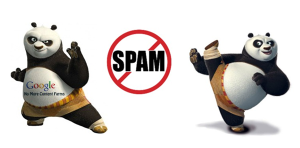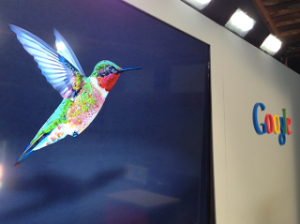When it comes to SEO optimization and guidelines, Google loves cute animals and associated graphics. First there was Google Panda. Then came Google Penguin. And now there’s Google Hummingbird. As with all good intentions there are winners and losers, and unintended consequences associated with change. Here is what companies of all sizes should know about Google Hummingbird, as well as Panda and Penguin updates.
Pandas, Penguins and Hummingbirds, oh my!
To maintain its steady 67% search engine market share, Google needed to improve ways it conducted searches and indexed information. Panda (launched in February 2011) and its updates improved search engine results by ranking useful and unique content higher. Content that hints at spam or lacks relevance is relegated to lower rankings.
Google Penguin (launched in April 2012) sought to find and punish those using questionable link-building and SEO strategies – especially those that employ a spam-like method to SEO. And, Google Hummingbird (officially launched on September 27, 2013 to coincide with Google’s 15th anniversary, but was being used as early as August 2013) is an algorithm that seeks to improve the speed and efficiency of searches with “conversational searches” now the norm.
Recent Updates and What They Mean
For the uninitiated, “conversational searches” are exactly what you might think they are: conducting queries on a search engine in a conversational manner such as, “what’s the closest place to buy a Dell computer to my house.” This has become an increasingly popular method for conducting searches as mobile device browsing continues to eclipse other methods of accessing the internet.
Using the conversational search example above, pre-Hummingbird results focused on key words such as “buy” and “Dell computer,” resulting in a lengthy search/result lists that have nothing to do with the user’s web browsing behavior. In post September-launch company releases from Google, Hummingbird was said to be focusing increased attention on each word in a conversational search query – instead of certain words – to achieve better result matches to the conversation (or entire sentence) instead of key words in it. As Google senses your searching behavior, likes and dislikes get filtered out and results are more defined.
Putting the “Hum” in Hummingbird
In search engine past, results used to be about matching keywords and phrases. With the advent of Hummingbird, it’s now about the true meaning of the query – what tech experts are calling a shift from “results” to “answers.”
Gone are the plus signs before words and quotation marks around words and phrases. Today Google Hummingbird is about the user’s intent, showing the best results in making conversational searches. To best meet that user intent, determine as many conversational phrases associated with your product or service in your website. Don’t just focus on key words associated with the theme of your website and the products and services on it. Use synonyms as well.
Search engines can better understand your website’s theme with meta data. Find some help using Google Structured Data Markup Helper. Use anchor text in your backlist. And, be sure to keep an eye on your competition. Check what “blended lists” (such as Google Shopping, Google Places, Google Images and organic results on the first page) are shown for your targeted key words and those of your competitors and seek to outrank them.
Also, consider using local search optimization. Videos of your products and services posted on YouTube will also register on Google Image. These are just a few ways to tackle optimization issues with Hummingbird, until Google creates another algorithm with a cute animal name and graphic to go with it.
Connect with GemFind:
GemFind on Facebook . GemFind on Twitter . Gemfind on Pinterest . Gemfind on Google+


